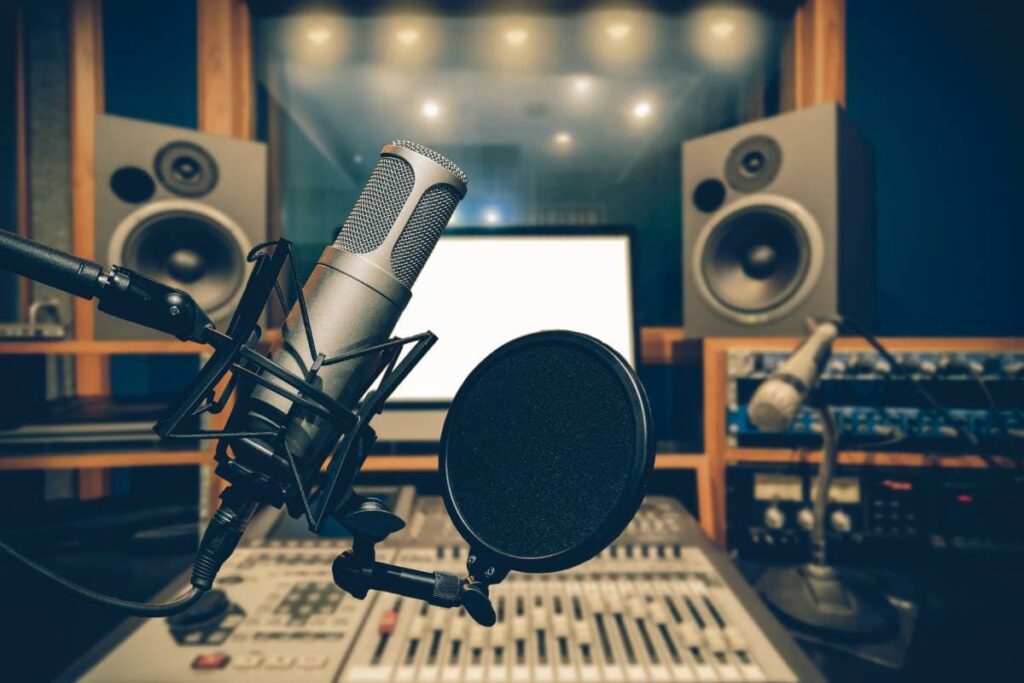When we sing or speak through microphones, our voice changes. Depending on the mic, it can be deeper, higher, or even distorted. So, do microphones change how we sound?
Our voice sounds different when we speak into a microphone. How much it changes depends on the quality and type of mic. Moreover, when your voice reaches your ear, it sounds different, even without a microphone. Therefore, your voice will sound different regardless of the mic’s accuracy.
There are different reasons why a microphone alters your voice. Some reasons are technical, and you can control them. This article explains why your voice changes and how to improve voice accuracy.
Table of Contents
- Here Is Why Your Voice Sounds Different on a Microphone
- How To Improve Sound Accuracy on a Microphone
- Conclusion

Here Is Why Your Voice Sounds Different on a Microphone
Even the highest quality microphones will alter the sound of your voice to some extent. There are a few reasons for the alteration, some you can control and some you can’t.
Let’s see why the sound changes.
Your Mic’s Frequency Response
Mics have a frequency response to your sound. This means the mic picks up both high and low frequencies and gives the output, which is the sound you hear.
We generally label these frequency responses as flat and colored. Mics with a flatter frequency response are more accurate. In contrast, the colored ones pick up some frequencies more than others, producing a different sound than the original.
Microphone’s Polar Pattern
The polar pattern is the ability of the microphone to capture sounds equally from all directions. With some microphones, your sound’s accuracy depends on where you stand relative to the mic.
There are three different types of polar patterns. To get maximum accuracy, you must pick the correct polar pattern, depending on the venue and your movement.
The three patterns are as follows:
Omnidirectional Pattern
Omnidirectional mics are sensitive and capable of picking up sounds equally from every direction. They do not depend on placement and positioning to pick up sound. You can place them anywhere and, in any direction, and these microphones will give the same sound.
Examples of omnidirectional patterns are headsets and lavaliers.
Bidirectional Pattern
Mics with a bidirectional pattern pick up sound from the front and back and none from the sides. Therefore, you must plan your movements carefully when using a bidirectional mic. If you stand to the right or left of the mic, the change in the sound of your voice will be immense.
However, the forward and backward movement gives maximum accuracy.
Ribbon microphones and mics with large diaphragms are examples of bidirectional patterns.
Cardioid Pattern
The third pattern is referred to as cardioid. Cardioid microphones pick up accurate sounds from the front and are slightly less sensitive to the sounds coming from the sides. Additionally, they completely reject sounds coming from the back.
Distance From the Microphone – The Proximity Effect
Your distance or proximity to the microphone also affects the accuracy of your sound. The proximity effect comes into play when you use directional microphones. As you move closer to a directional mic, your voice attains more bass. As you move away, the sound will change.
Generally, you can minimize the proximity effect by using omnidirectional mics. However, the choice of mic depends on the purpose for which you are using it.
Have you ever tried karaoke? You may have felt that you can’t sing well with a microphone. Is that your perception or is there something really different? I’ve written a complete article to answer your question. Why Do You Sing Worse With a Microphone?
Sensitivity and Quality of Microphones
Low-quality microphones are one of the most common reasons you sound “too different” on a mic. These mics have poor sensitivity and fail to pick sounds optimally, giving inaccurate output.
The mic’s sensitivity refers to its capsule’s reaction to sound waves. A microphone capsule has a solid plate and diaphragm. The mic is said to be sensitive when the diaphragm vibrates because of the slightest change in sound waves. A sensitive diaphragm picks up your sound better.
An example of a sensitive mic is the condenser microphone.
Your Voice Sounds Different to You
This point is more relevant when we use a microphone to record our voice.
No matter how accurate or sensitive your mic is, your voice will sound different to you, and we cannot control this aspect. I will try to explain the reason for this in the simplest words.
Sound reaches us through two pathways. One path contains the sounds from other sources, while the second has our voice. The path we use for our voice is called bone conduction.
The sound that reaches us through bone conduction makes our voice sound deeper to us. Therefore, regardless of the accuracy of the mic, our voice recording will sound different to us.
How To Improve Sound Accuracy on a Microphone
A microphone does have an impact on how accurate your voice sounds. If you want to get maximum accuracy on a microphone, there are a few things you can do.
Mic’s Position and Holding Technique
For your mic’s positioning and holding technique, here are easy-to-follow tips:
- The angle at which you hold the mouth should be slightly off-center.
- Do not hold the mic too far from your mouth. However, there should be some distance between the mic and your mouth – three to six inches (7.62 – 15.24 cm).
- Using a mic stand is an effective technique if you do not want to move much.
- Adjust your mic’s input levels to 75%. A too low or high value takes away the accuracy of the sound.
- Avoid cupping your mic. It can change the tone and vocal quality, and you may end up sounding like someone else.
Choose the Right Frequency Response
A mic’s frequency response should match your voice. A bigger diaphragm is better for picking up lower frequencies, such as a male voice ranging between 110 and 120 hertz.
A smaller diaphragm, on the other hand, works better for higher frequencies, such as females ranging between 200 and 210 hertz.
As mentioned above, other factors like mic quality, polar patterns, and sensitivity also impact how accurate you sound.
Conclusion
Your voice will sound different on a microphone. However, the quality of the microphone can improve or deteriorate voice accuracy. Other factors such as how you hold your mic, where you place it, and its proximity can also influence voice accuracy.
If you want to sound as original as possible, you must do a trial run before your event and iron out all the glitches that can make your voice sound too unreal.
- Review of the ALABS IRON MINI-WL: A Powerhouse Wireless Microphone - October 4, 2023
- What is a Saturator in Music Production: A Brief Explanation - May 11, 2023
- What Are Rotary DJ Mixers? An Overview - May 11, 2023
SoundStudiomagic.com is a participant in the Amazon Services LLC Associates Program, an affiliate advertising program designed to provide a means for sites to earn advertising fees by advertising and linking to Amazon.com. We also participate in other affiliate programs which compensate us for referring traffic.

